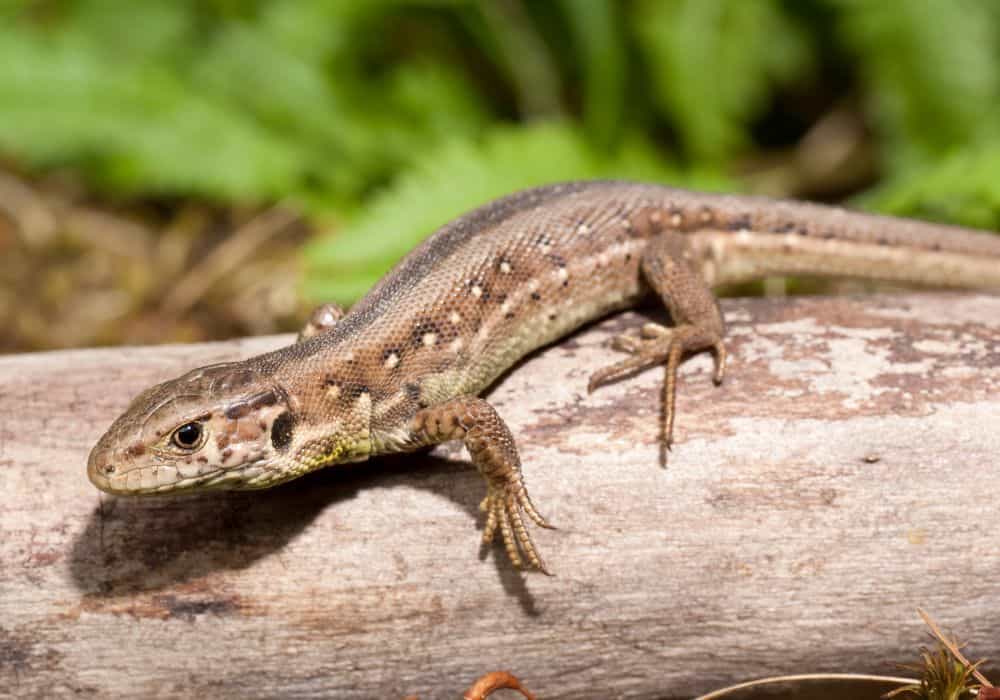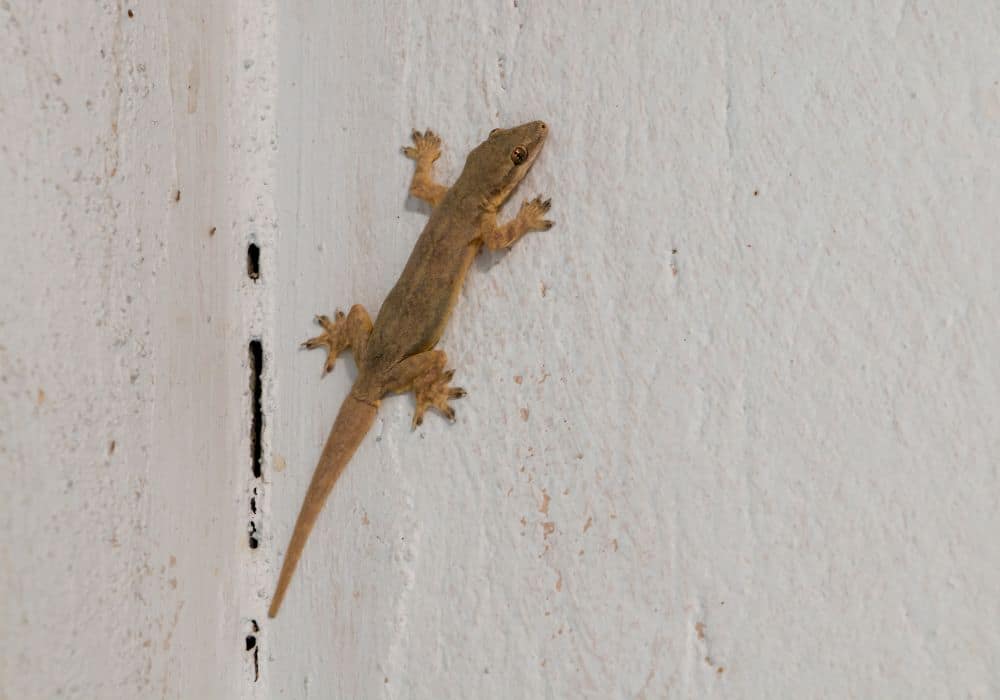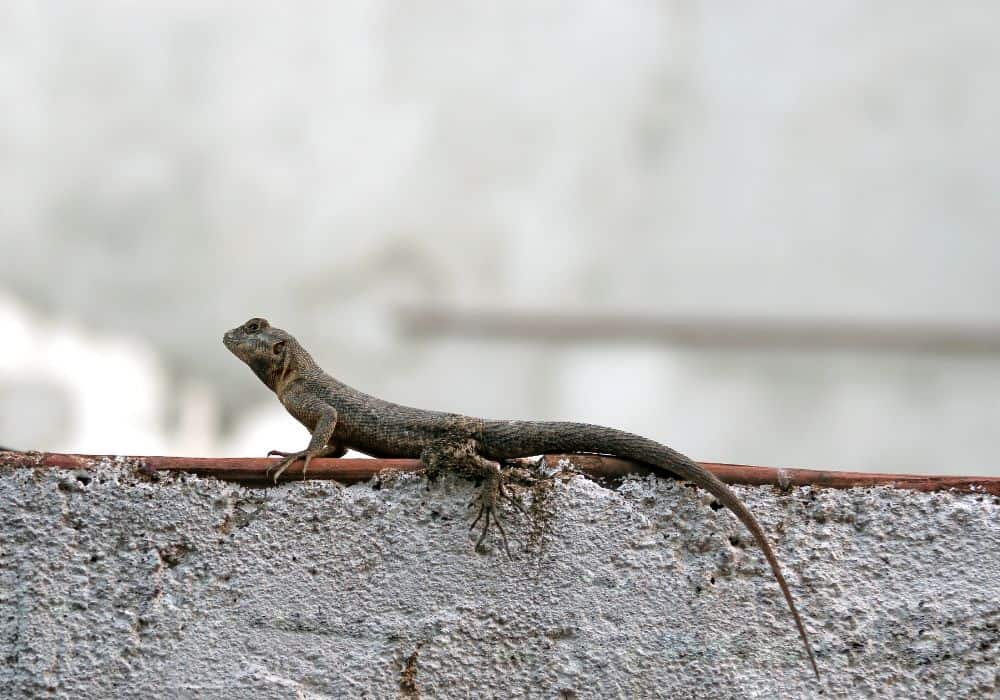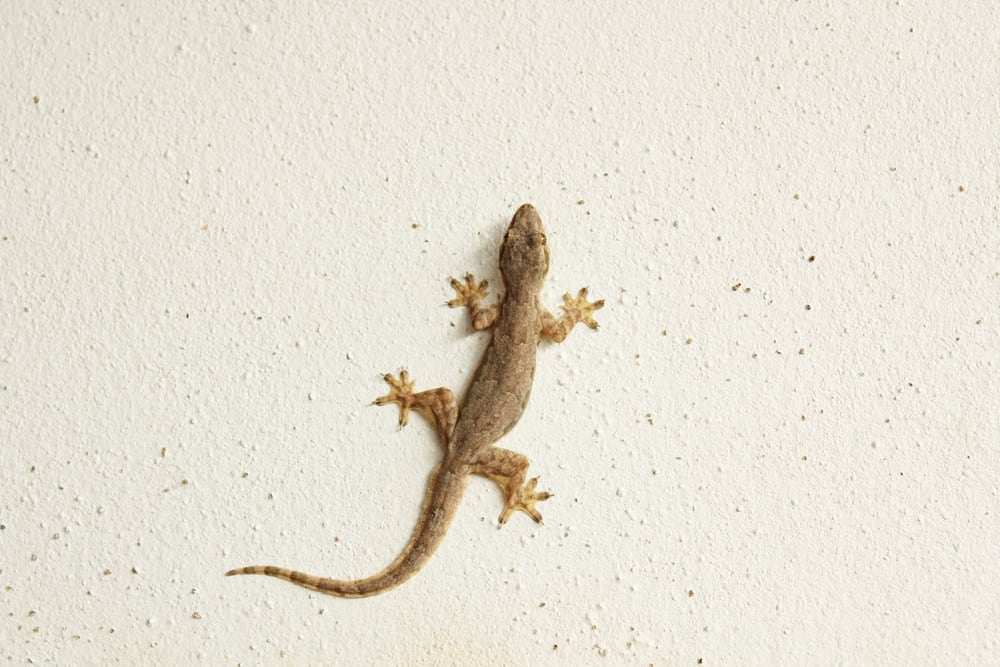There are two types of people in the world: those that think seeing a lizard is a cool treat to their day and those who want the reptile to poof into non-existence. You usually become the latter when a lounge of lizards move into your home.
Lizards can be tricky to deal with because they’re small, agile, and elusive. Often, you need to resort to craftier home remedies and exclusionary methods to take care of a lizard problem in your home.
In this guide, we explain what attracts lizards and how you can use this information to drive them out of your home. Keep reading to uncover useful home remedies that deter lizards, a brief overview of commercial repellents, and some signs you need to contact a professional.
What Attracts Lizards to the Home
Lizards are pretty easy to understand. As cold-blooded predators, they’re attracted by:
- Warmth
- Food
- Shelter
- Moisture
You’re more likely to see them in the home once the outside temperature drops, but they’ll also move into a space with high moisture, plenty of hiding spots, and a plethora of insects to feast on.
House lizards would rather be outside, and they’ll gladly vacate if you make your home less welcoming. For a comprehensive approach to remove the lizards, you want to seal off points of entry, eliminate their food source, and utilize repellents to prevent reentry.
Identifying the Point of Entry
While lizards can simply walk through the front door, it’s unlikely that’s how they’re getting in (unless you’re leaving your front door open for extended periods). Any infestation is a warning that something has compromised the structure of your home, usually:
- Cracks in your walls, ceiling, or foundation
- Torn or misaligned screens
- Unsecured ventilation systems/exhaust fans
You may notice signs of lizard activity in these areas. Lizards may drop their tail if they get stuck in the small crack. They may also leave behind droppings (about ⅛ inches long; black with a white end).
Once you identify the potential entry point, you know what work needs to be done. You may want to wait until you use the repellent methods listed below first so they can vacate, but afterwards something as simple as using caulk or switching to metal screens can keep your home lizard-free.
Where Lizards Settle In
Lizards may not settle around the point of entry. They usually want a space that has high moisture, warmth, and plenty of food. This makes some areas more appealing than others, including:
- Cabinets
- Sinks
- Pantries
- Trash cans
Sealing off the area will keep them from getting back inside, but you’ll want to target the living space when kicking them out.
Limiting Food Sources and Moisture

Lizards usually pop up when you have another infestation underway. Keep an eye out for an unusually high number of their favorite snacks, including:
Your response will depend on the bugs you’re dealing with. Regardless, make sure you wear protective gear whenever handling chemicals and follow all instructions on commercial pesticides. Consider a pest-control service if the problem remains.
Lizards will also snack on leftover crumbs and spills that aren’t cleaned up. Make sure all leftover food gets into the trash can, and wipe down your countertops every evening.
Deal with any leaking pipes as soon as you’re aware of them; even a minor leak can create a lizard’s paradise. In humid environments, dehumidifiers will keep the climate too dry for lizard comfort.
A Lizard’s Desire for Warmth
Lizards are cold-blooded animals, meaning they cannot regulate their own body temperature. If they get too cold, they won’t be able to move and become incredibly vulnerable.
Usually they want to find someplace warm to wait out the colder months. This can be a small burrow or crack in a tree or log, but your home is much more attractive.
If you live in an area where lizards are normally active during warmer months, look for entry points before the temperature drops. This can prevent an infestation before it starts.
Homemade Lizard Repellents

Home remedies for lizards work in two ways: stinking them out and scaring them off. You can use a combination of methods to get them out of your home, but wait until you take care of what attracts them first.
Lizards are likely to put up with these repellents if they have a moist, warm place to hang out and plenty of available food. Once you take care of the bugs and environmental factors, it’s time to move in with these repellents.
Pepper, Garlic, and Other Offensive Smells
Just like smells can draw them in, you can run lizards out with odors they hate. Those at the top of the list include:
- Spicy scents (black pepper powder, red chilli powder, chilli flakes, tabasco sauce)
- Garlic (including garlic juice, garlic powder, and garlic cloves)
- Eggshells
- Onion
- Tobacco
- Coffee powder
- Essential oils (mainly peppermint and eucalyptus)
You can easily make your own repellent by combining 2 Tbsps of your choice ingredients in a spray bottle with water. Steep the concoction outside for a few days for greater efficacy, then spray down the areas they occupy or travel through.
Some materials, like egg shells, tobacco, and coffee, are better used as a dry powder to form a repellent barrier. Just make sure you change them often as they deteriorate.
Peacock Feathers
Peacock feathers are regarded as natural lizard repellents. They make great decorations, and you won’t need to replace them or reapply.
While the efficacy is argued, there’s a solid reason people use them in their home. The feathers on a male peafowl feature bright eyespots that mimic a predator’s stare. These instill fear in your trespassing reptiles, and they would much rather find a peacock-free home to live in.
You can usually find them for a modest price at your local market. Farms that keep peafowl around may also sell you a bundle or even let you grab some feathers for free.
Commercial Lizard Repellents

Home remedies are usually all you need, but more stubborn lizards may require a commercial approach. When you reach this point, you’re usually backed into a corner with naphthalene balls (moth balls) and lizard-repellent sprays.
Whatever you use, make sure it works with your lifestyle and the other inhabitants in your home. Chemicals can be your friend, but they also require greater consideration that your pets or small children may not be capable of.
Keep in mind that some of these tools will also kill the lizards instead of sending them on their way. If this is not your goal, make sure you read the fine print.
Naphthalene Balls
Moth balls are a common recommendation for pest control across the board, but people seem to either love them or hate them. Naphthalene, the active ingredient, is harmful if inhaled, so they work best in out-of-the-way locations.
Mothballs also contain dichlorobenzene, which is toxic to lizards if consumed. If you want to use them, we recommend placing them in a bowl to prevent contamination of the surrounding area.
Do not use them if you have small animals or children in the home unless you’re certain you can keep them locked away.
Sprays
Commercial sprays for lizard and gecko repellent are a great choice if you want something proven that you don’t have to make on your own. Most of these formulas aim to repel the reptiles, but they may be toxic if ingested or ineffective if you don’t get rid of what’s attracting them in the first place.
Some sprays have the added benefit of being odorless and safe for use around small animals and children, making them easier for use in family homes. Make sure you follow all instructions, including the reapplication schedule, to ensure you get your money’s worth.
When to Contact a Professional Pest Control Service
Most can handle a mild lizard issue on their own, but lizards that keep showing up despite your best efforts require a professional approach. A pest control specialist can evaluate your home to determine what’s going wrong.
Usually their response tackles the insects feeding the lizards, although they may notice a crack that you missed or suggest solutions like reworking your landscape to eradicate low-spots that collect moisture.
A professional pest control service is invaluable if you need to get rid of lizards quickly and efficiently. They usually offer a satisfaction guarantee to incentivize their success, and they can clear out a pest problem in a few hours or days.
Conclusion
Hopefully these methods help you see lizards as cool, colorful reptiles instead of pesky pests. In most cases, addressing the root issue is enough to prompt the cold-blooded creatures to relocate.
When getting rid of lizards, remember to:
- Eliminate food and moisture sources
- Repel them from the home before sealing up their entry point
- Fix all cracks, crevices, broken screens, and leaking pipes to prevent reentry
Let us know what works for you or what you need help with when dealing with your lizard problem!
